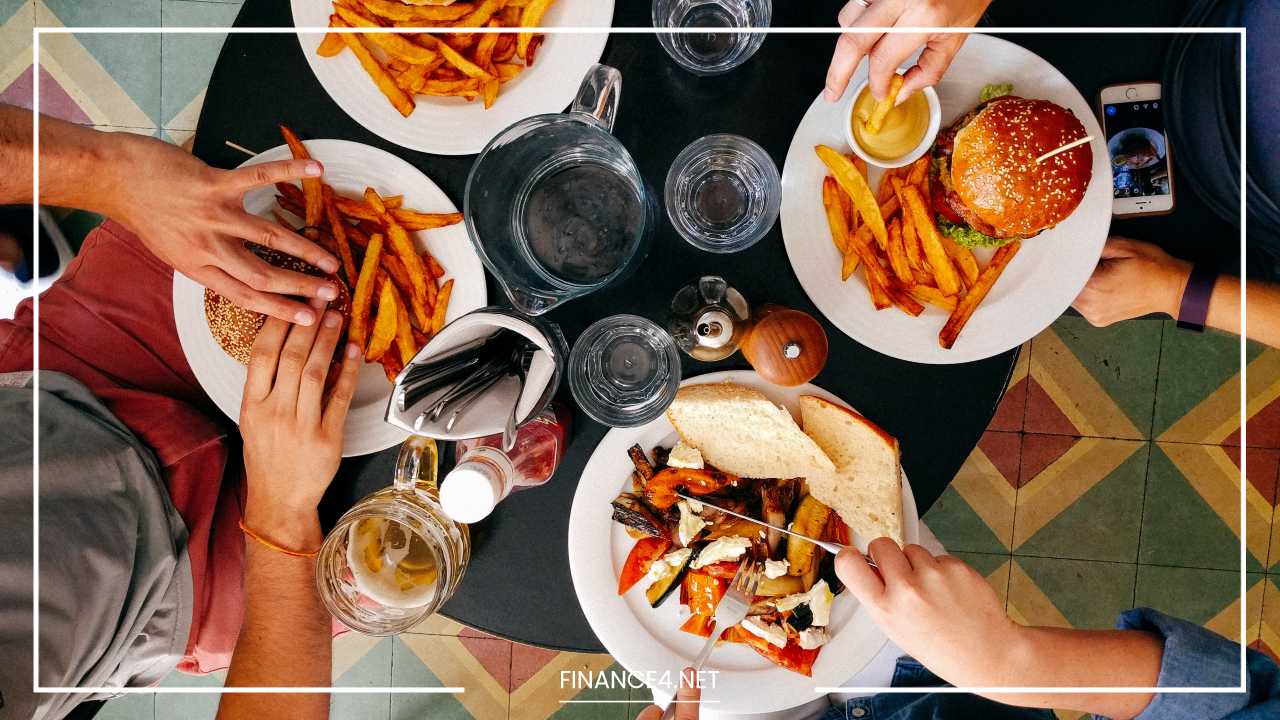Frugal Dining: Guide to Saving on Food Expenses

Saving on Food
In an era where expenses seem to escalate, mastering the art of frugal dining becomes an essential skill.
Food costs can significantly contribute to your monthly expenditures, but with strategic planning and informed choices, it’s possible to enjoy delicious and satisfying meals without breaking the bank.
In this comprehensive guide, we delve into various aspects of money-saving tips on food, providing you with an in-depth understanding of how to cut down on expenses while maintaining the quality of your culinary experiences.
1. The Thrifty Coffee Connoisseur: Reusing Coffee Grounds for Maximum Flavor and Savings
For many, coffee is a daily ritual, and the cost of quality coffee beans can quickly add up. However, being a coffee enthusiast doesn’t have to strain your budget.
Consider the practice of reusing your coffee grounds, a simple yet effective way to cut costs without compromising on flavor.
Contrary to the belief that coffee grounds lose their potency after a single use, using them twice or more won’t significantly affect the taste of your brew.
Opt for a permanent filter over disposable paper ones, as this not only reduces waste but also contributes to long-term savings. To keep your grounds fresh for the next day, store them in the refrigerator.
Investing in a high-quality coffee maker with a reusable filter is a wise decision for those looking to minimize their environmental impact and enjoy cost-effective brewing.
By adopting this small change in your coffee routine, you can witness a noticeable reduction in your monthly coffee expenses.
2. Bread Aficionados Rejoice: The Joys of Day-Old Bread
Bread, a staple in many households, often takes a toll on grocery budgets. However, there’s a thrifty solution for bread lovers – embrace day-old bread.
Grocery stores typically sell bread made the day before at a significantly lower price, offering an excellent compromise between cost and freshness.
Day-old bread is perfectly suitable for consumption, and buying in bulk can lead to substantial savings. Utilize your freezer to store excess loaves, and when ready to enjoy, use the microwave for defrosting and reheating in short intervals to maintain the texture.
This not only reduces your expenses but also contributes to minimizing food waste, aligning with a more sustainable lifestyle.
3. Strategic Grocery Shopping: Planning, Prioritizing, and Bulk Buying
Efficient grocery shopping is a fundamental aspect of curbing food expenses. Start by creating a comprehensive list of essential items before heading to the store.
This pre-planning helps you stay focused on purchasing necessities and prevents impulsive buys that can quickly add up.
Prioritize basic goods and resist the temptation to purchase non-essential items. Take note of product prices, as store-brand alternatives often offer comparable quality at a lower cost.
Retain receipts from previous trips to guide your future purchases, enabling you to make informed decisions and avoid unnecessary expenses.
Consider buying non-perishable items in bulk, such as rice, pasta, canned goods, and cleaning supplies.
This approach not only results in significant savings over time but also reduces the frequency of trips to the grocery store.
Efficient storage practices, such as organizing a pantry or designated storage space, further contribute to maximizing the benefits of bulk buying.
4. Dine Smart: Timing, Hotel Perks, and Local Insights
Dining out doesn’t have to be reserved for special occasions, and with strategic planning, you can enjoy restaurant experiences without straining your budget.
If you have a penchant for upscale dining, opt for lunch instead of dinner. Lunchtime menus often feature the same quality dishes at lower prices, allowing you to indulge in gourmet dining without the premium evening costs.
Many establishments also offer lunch specials and promotions, providing additional incentives for midday dining.
When traveling and staying at hotels, check whether breakfast is included in your total room charge. Choosing accommodations with complimentary breakfast can significantly reduce your daily food expenses, freeing up your budget for other activities.
Additionally, exploring local eateries recommended by residents can lead to hidden gems where the food is exceptional, and the prices are reasonable.
For those moments on the go, carrying snacks can be a game-changer. A well-stocked stash of chocolate bars, chips, or cookies can help curb your hunger and prevent impulsive spending on snacks while exploring new places.
5. Affordable Eating Without Compromising Quality: Exploring Diverse and Budget-Friendly Options
Contrary to the misconception that eating cheaply means sacrificing quality, numerous budget-friendly options provide both affordability and flavor.
Explore diverse and local food options in your area, such as food trucks, local markets, and smaller establishments, which often offer delicious meals at a fraction of the cost of high-end restaurants.
Consider incorporating more plant-based meals into your diet. Vegetarian and vegan options tend to be more budget-friendly while still providing essential nutritional value.
Experimenting with new recipes at home can be both a cost-effective and rewarding way to enjoy tasty meals without the restaurant price tag.
6. Final Remarks: The Path to Long-Term Savings and Culinary Satisfaction
In conclusion, mastering the art of frugal dining involves making thoughtful choices that align with your budgetary goals.
From reusing coffee grounds and embracing day-old bread to strategic grocery shopping and mindful dining out, there are numerous ways to achieve significant savings without compromising the quality of your meals.
By incorporating these tips into your daily routine, you not only reduce your food expenditures but also contribute to a more sustainable and mindful approach to consumption.
Take the time to explore your local food scene, experiment with home cooking, and make choices that align with your financial objectives.
With a combination of planning, prioritizing, and embracing cost-effective alternatives, you can savor delicious meals while achieving long-term savings.
As you embark on this journey of culinary and financial mastery, remember that each thoughtful choice brings you one step closer to a more fulfilling and budget-friendly dining experience.



